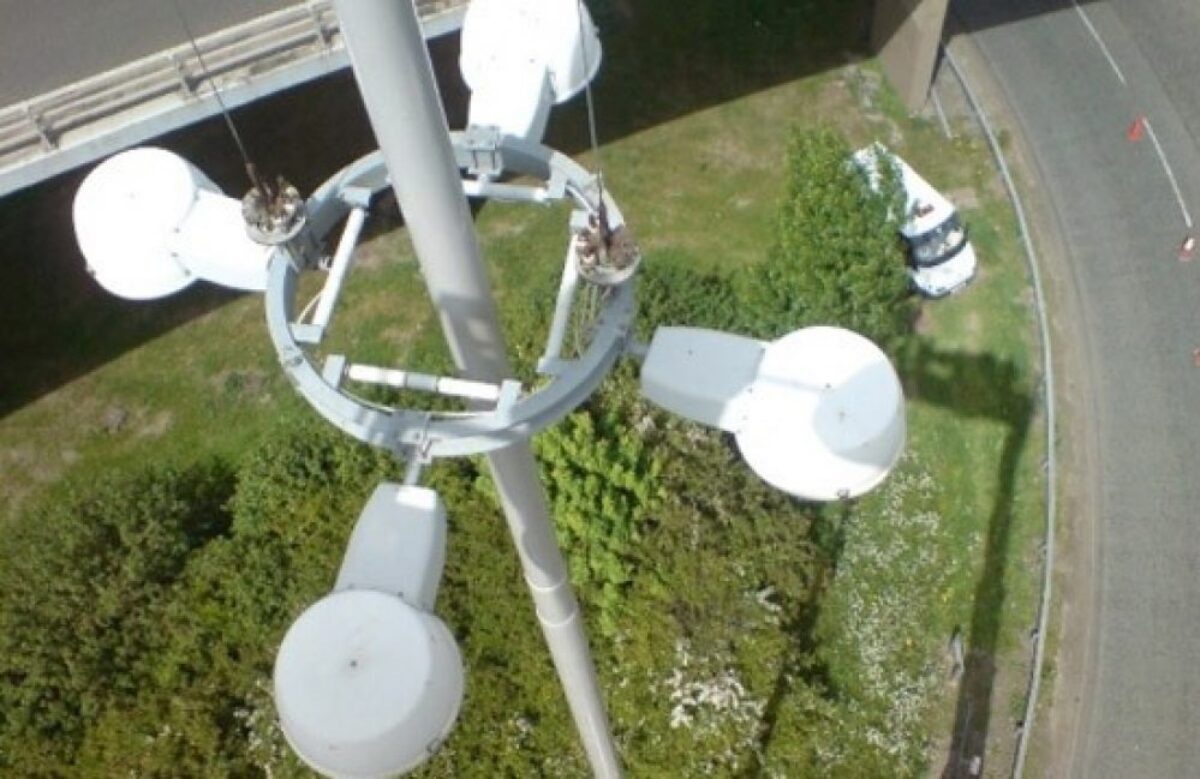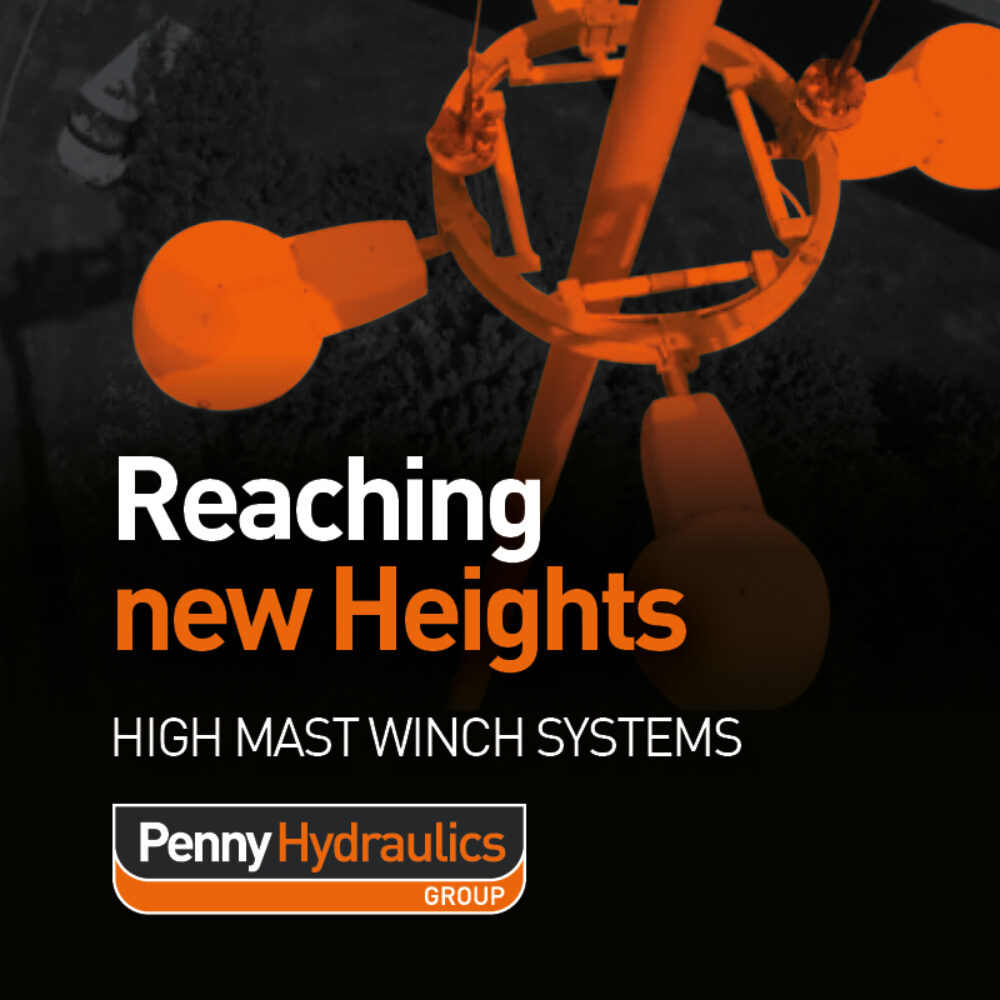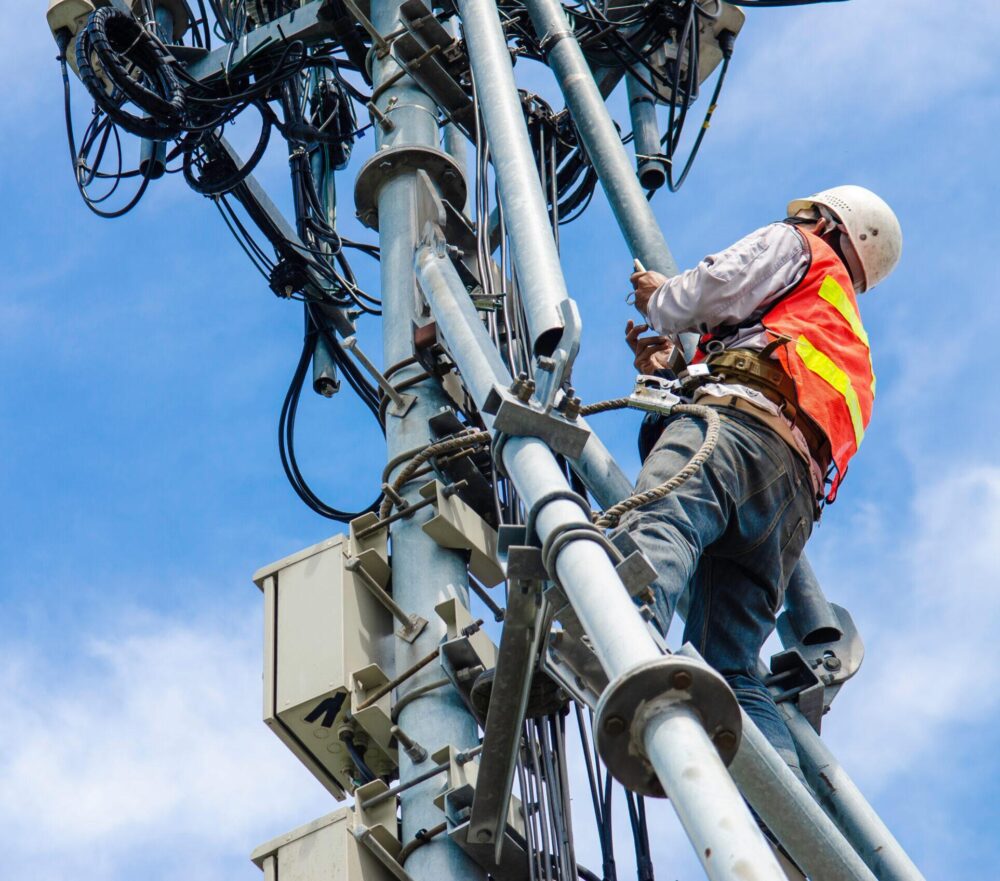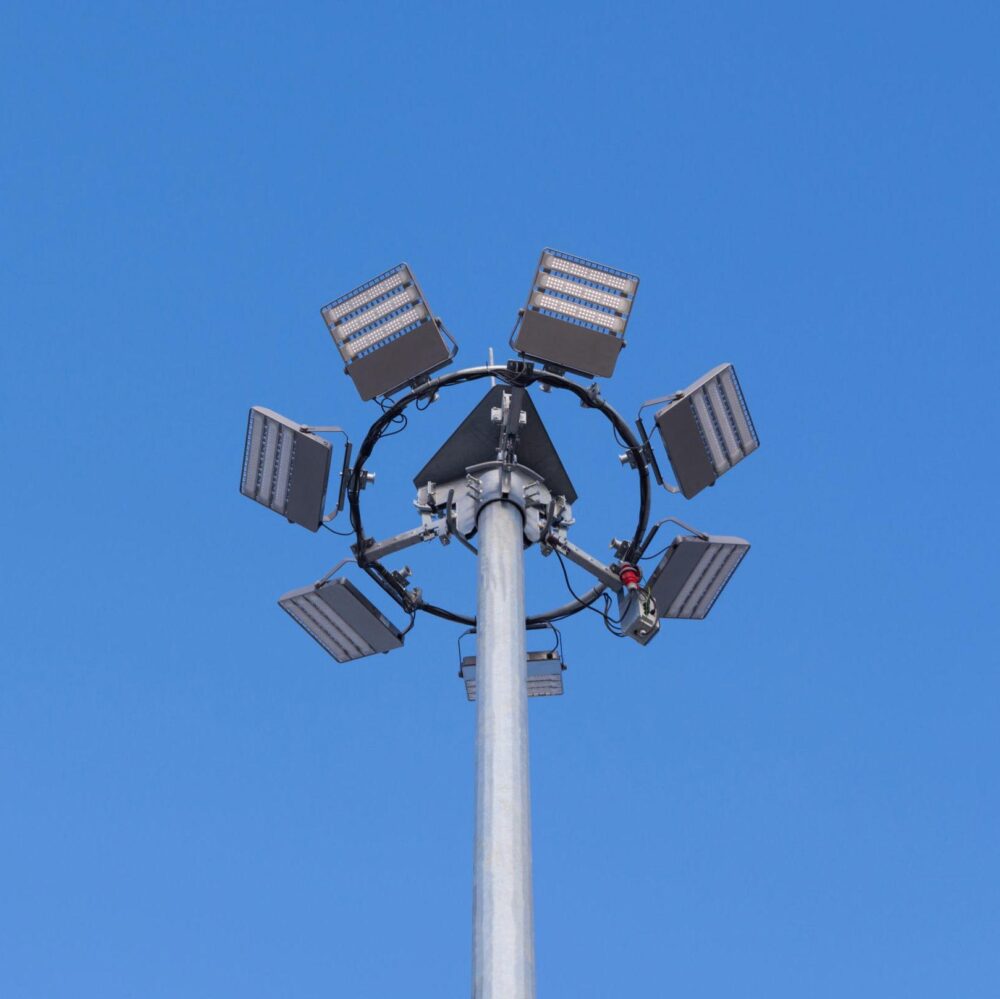The role of the maintenance team is critical to keep flood lighting operational at all times. Accessing flood lights for maintenance, however, is the tricky bit. Every facilities manager knows, where possible, working at height is to be avoided. This is where the flood light winch comes into its own.
Also known as a high mast lighting winch, this access system enables a flood light installation to be lowered to ground level on a single wire rope with no trailing electrical cable. Available with a variety of operating methods, a light winch provides ground level lighting access in minutes. This allows maintenance teams to completely avoid the need to work at height. A light winch eliminates the need to purchase and maintain access equipment, such as a scissor lift or scaffold tower, and PASMA certification. Furthermore, the disruption associated with working at height is massively reduced.
High mast light poles are available in heights to suit all kinds of applications with the most common pole heights reaching from 8 to 30 metres. High mast winch systems are available in standard lowering distances of 10 and 15 metres, with custom configurations available for longer drops. The majority of flood light winches use a dual wire system attached to either side of the flood light rig for stability.
Flood light winch systems are electrically powered using contact plates to isolate the power supply when maintenance is being undertaken. Each light winch can raise and lower light rigs weighing up to 15kg, with heavier loads accommodated via custom configuration.
In certain environments, aesthetics are important. A flood light winch is a self-sustaining system fitted in the light pole base. High mast winch systems are designed so that no mechanisms are visible once raised and in place.




